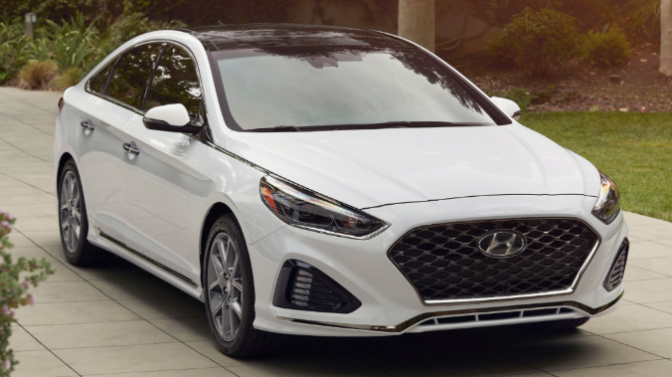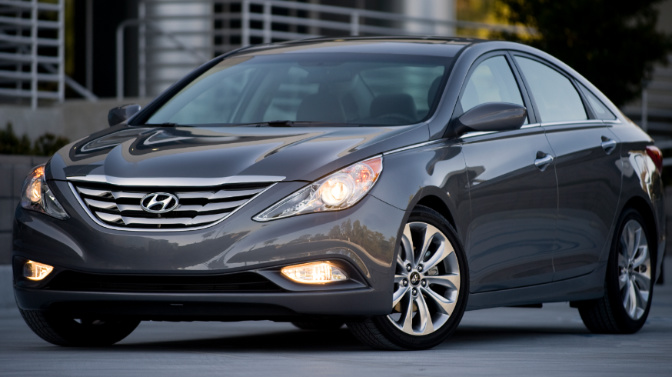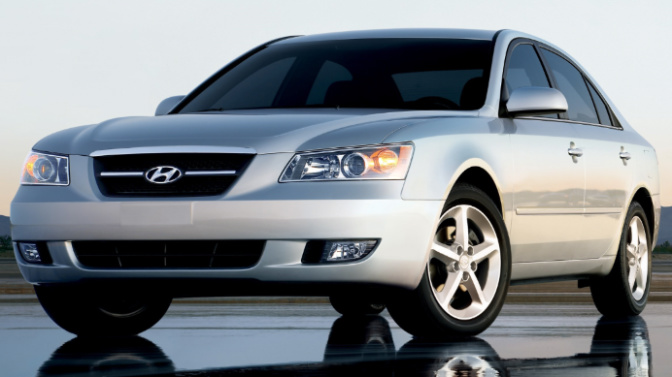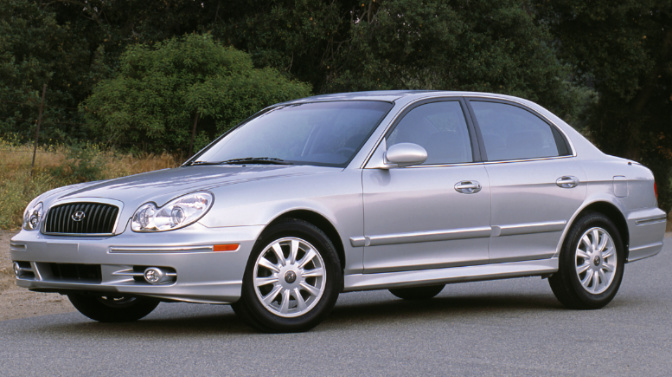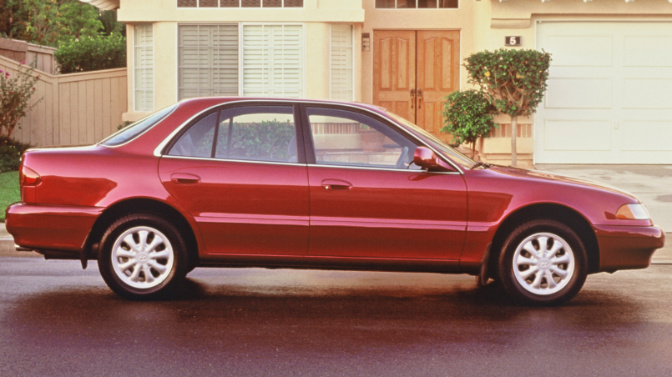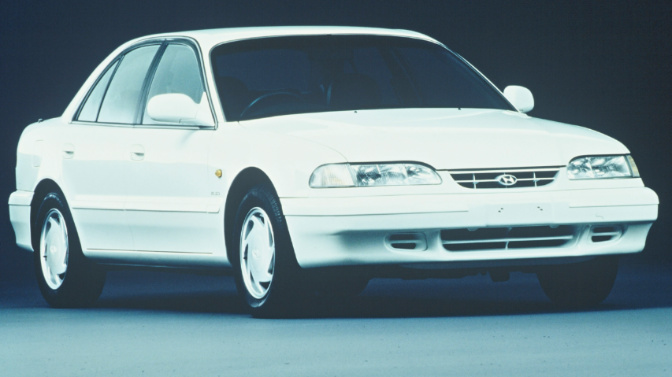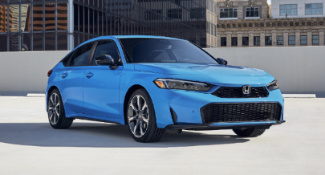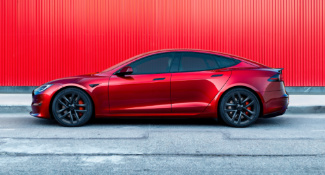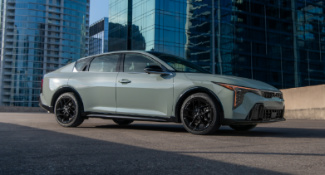Top Questions About the Hyundai Sonata:
1. Is the Hyundai Sonata a good car?
The Hyundai Sonata is generally regarded as a good car, offering a blend of comfort, efficiency, and value. It is well-equipped with modern technology, safety features, and a spacious interior. The Sonata also provides a smooth and comfortable ride, making it a great choice for daily commuting and long trips. In addition to its appealing design and features, the Sonata is known for its reliability and comes with Hyundai's industry-leading warranty.
2. Is Hyundai discontinuing the Sonata?
At the time of writing, the Sonata was still on sale in North America and the manufacturer had not announced any official plans to discontinue it. There have been rumors suggesting it may be discontinued but, again, nothing has been confirmed. The growing popularity of SUVs and crossovers has caused a slide in sales of sedans, such as the Sedona, and automakers are generally shifting their focus towards more profitable segments, so it wouldn't be a huge surprise if the Sonata were phased out.
3. What is the most common problem with the Hyundai Sonata?
One of the most common problems reported with the Hyundai Sonata, particularly in older models, is engine-related issues, such as engine knocking or failure, which in some cases has led to recalls. Other issues that owners have reported include problems with the transmission, electrical systems, and premature wear of suspension components. However, many of these issues have been addressed in newer models and, overall, the Sonata has a good reputation for reliability.
4. What are the cons of the Hyundai Sonata?
Some cons of the Hyundai Sonata include less engaging handling compared to some competitors, particularly those that offer sportier driving dynamics. The base engine, while efficient, may feel underpowered for some drivers, especially when compared to turbocharged options in the segment. While the interior is well-designed, some might find the materials and fit-and-finish slightly below the standards set by more premium competitors. Finally, like many sedans, the Sonata may not appeal to those looking for the higher seating position offered by SUVs.
The Hyundai Sonata was introduced to the US market in 1989 as the company's foray into the competitive midsize sedan market. The company built its reputation on value, and the Sonata has served as the cornerstone of its philosophy, alongside other popular models such as the smaller Elantra sedan and the midsize Santa Fe crossover.
Over its seven generations of production, it has competed against some of the best-known names in the automotive industry, such as the Toyota Camry, the Honda Accord, the Nissan Altima, the Mitsubishi Galant, the Chevrolet the Malibu, and the Pontiac Grand Am – some of which are no longer on sale. However, Hyundai's commitment to making the Sonata a refined, stylish, safe, and technologically advanced sedan has helped it avoid the chopping block and continue for more than three decades.
2020 – Present Hyundai Sonata (7th Generation)
The latest Sonata was introduced for the 2020 model year and featured much more progressive styling than the previous generation's.

A 2.5-liter 191-horsepower four-cylinder engine was featured in lower-end Sonata models, while a 1.6-liter 180-horsepower turbocharged four-cylinder engine powered the higher trim levels. A 192-horsepower gas-electric hybrid was also offered in the Hyundai Sonata Hybrid, with some models featuring solar cells on the roof for extra fuel economy.

Buyers could choose from one of four trim levels. SE and SEL models featured the standard 2.5-liter engine, plus Apple CarPlay, Android Auto, LED headlights, and an eight-inch touchscreen. SEL models received additional features such as heated front seats, blind-spot monitoring, rear cross-traffic alert, and a hands-free trunk.
Standard safety features on both trim levels included adaptive cruise control, automatic emergency braking, lane-keep, and lane-centering assist.
SEL Plus and Limited trim levels used the 1.6-liter turbo engine with less horsepower but more low-end torque. SEL Plus models featured upgrades like a digital instrument cluster and faux leather upholstery, while Limited trims featured remote parking assist, a heated steering wheel, a digital key, a head-up display, and a surround-view parking camera.
Each Sonata model came standard with an eight-speed automatic transmission and front-wheel drive.
Unlike the Sonata's sister car, the Kia K5, Hyundai did not offer an all-wheel drive (AWD) option.
A performance-oriented trim level called the N Line was introduced for the 2021 model year, featuring a 2.5-liter turbo four-cylinder that produced 290 horsepower. It was still only available in front-wheel drive, but upgraded suspension, dual exhaust tips, and sports seats gave it some street cred.
Hyundai introduced the 2022 and 2023 models with only minor changes. The following year marked a mid-cycle refresh with a sizeable front fascia makeover that included a new headlight and lightbar configuration. The Sonata's interior was also freshened up, with a larger, more improved infotainment display that featured wireless device connectivity highlighting the changes.
Additionally, AWD became an option for SEL models. The SE trim took a year-long hiatus, making the SEL trim the least expensive option in the Sonata lineup. With all of the upgrades made to the Sonata in 2024, there were no significant changes for the 2025 model year.
2015 – 2019 Hyundai Sonata 6th Generation
Hyundai introduced another new Sonata for 2015. Its appearance was similar to the previous model's but more aggressive and upright and there was a big emphasis on refinement.
There were three trim levels and engines comprised a 2.4-liter 185-horsepower four-cylinder engine plus a 2.0-liter 245-horsepower turbocharged four-cylinder, both of which were mated to a six-speed automatic transmission. A new Eco trim carried a 1.6-liter 177-horsepower turbocharged four-cylinder mated to a seven-speed dual-clutch automated transmission.
The 2016 Sonata was among the first new vehicles to offer full smartphone integration, first with Android Auto and then with Apple CarPlay. This technology quickly spread throughout the Hyundai line and the wider automotive industry.
For 2018, the Sonata got a refresh to inject some fresh styling it lost in the years since its redesign. Hyundai added the turbocharged, 2.0-liter engine to more trims levels, and the Eco model was discontinued. As sales slid for the old model, Hyundai added only minor feature enhancements or reduced prices until a new, radical model appeared.
2011 – 2014 Hyundai Sonata (5th Generation)
An extreme styling update made audiences notice the 2011 Sonata. Its sleek body and aggressive front end made it stand out among midsize sedans, and its dramatically sloping roofline was favorably compared to that of the Mercedes-Benz CLS-Class. It was another step forward inside, where the previous model's functional yet staid format was replaced with an equally sweeping dash, upgraded materials, and more room.
Things were more conventional under the skin. The fifth-generation Sonata came standard with a 2.4-liter 198-horsepower four-cylinder engine. A five-speed manual was briefly available, but most models came with a six-speed automatic.
For the first time, there was no V6 option. In its place was a 2.0-liter 274-horsepower turbocharged four.
In 2012, Hyundai added the BlueLink emergency telematics system to all models, which included automatic crash notification and assistance, SOS emergency assistance, and enhanced roadside assistance. It was the company's first foray into an OnStar-like system and a step toward adding advanced technology to its vehicles.
Another technological step was taken in 2014 with the first Sonata Hybrid variant. Available on the GLS and Limited trims, it used a 2.4-liter four-cylinder engine paired with an electric motor for a total output of 199 horsepower.
The Sonata became a desirable midsize sedan that challenged the best-sellers and introduced a new daring design emulated by rivals. It would be a tough act for Hyundai to follow.
2006 – 2010 Hyundai Sonata (4th Generation)
The fourth-generation Sonata was introduced in 2006 and was the first Hyundai model produced in the US. This new car was evenly sized compared to its competition and resembled the best-selling midsize sedans to broaden its appeal.
Many standard features were added, including anti-lock brakes, cruise control, and stability and traction control. Engine options included a new, 2.4-liter 162-horsepower four-cylinder engine mated to a five-speed manual or four-speed automatic transmission or a 3.3-liter 235-horsepower V6 engine mated to a five-speed automatic transmission. All that was in line or even a step ahead of competitors, putting Hyundai in the sights of Ford, Honda, Nissan, and Toyota.
While the next two years saw only minor changes, 2009 brought a fresh interior that pushed the Sonata to the top of its class for cabin quality by redesigning the center stack, the center console, and the gauges — all updated for aesthetics and ergonomics. Each engine also received minor updates to increase power output by 10 horsepower.
The fourth-generation Sonata served Hyundai well by boosting its sales and establishing it as a significant player in the midsize sedan class. Still, the automaker would take a dramatic step for its next act.
1999 – 2005 Hyundai Sonata (3rd Generation)
In 1999, Hyundai introduced the third-generation Sonata with a new look, moving to a sleek, modern design – far removed from that of its boxy predecessors. Special attention was paid to refinement and design, as Hyundai tried to compete with the top family sedans. A 2.4-liter 149-horsepower four-cylinder engine or a 2.5-liter 170-horsepower V6 engine was mated to either a five-speed manual or four-speed automatic.
For the 2001 model year, the Hyundai Sonata received a corporate relative. The Kia Optima was a new midsize sedan sold through different dealerships, it looked different on the outside but was identical under the skin.
In 2002, the Sonata's styling was revised to be bolder. The mid-generation facelift also provided a refined suspension, optional manual control for the automatic transmission, and a high-end LX model. After a decade of making the Sonata more advanced and better equipped, Hyundai would make even more significant strides with a Sonata better suited for the American market.
1995 – 1998 Hyundai Sonata (2nd Generation)
A new Sonata was introduced for 1995. It had a much more rounded design than before and was more in line with the current trends for family sedans in the US.
The base GL model could be equipped with a new 2.0-liter 137-horsepower four-cylinder engine or a 3.0-liter 142-horsepower V6 engine. The four-cylinder option could be mated to a five-speed manual or four-speed automatic transmission, while the V6 used a standard four-speed automatic. A better-equipped GLS came only with the V6 and automatic transmission. Newly standard equipment included dual airbags, air conditioning, and a cassette stereo system.
For 1997, the Sonata received a styling update wearing a sheet-metal body that featured new designs for the grille, mirrors, rear end, and fascia. Interior noise and vibrations were dampened significantly in the later years with the addition of insulation and flush-fitting doors.
1989 – 1994 Hyundai Sonata (1st Generation)
The 1989 Sonata entered the US market with a lower GL trim and higher GLS trim, each with one of two powertrain configurations. First was a 2.4-liter, 116-horsepower four-cylinder engine mated to a five-speed manual transmission. The second was a 3.0-liter, 142-horsepower V6 engine mated to a four-speed automatic transmission.
In 1991, Hyundai tweaked the trim level lineup to offer GL, GLS, and GLS SE trims. The GL and GLS received the four-cylinder engine, while the GLS SE received the V6. In 1992, the line was reduced to the GL and GLS, sporting a 2.0-liter, 128-horsepower four-cylinder engine mated to a five-speed manual transmission.
Hyundai made a few revisions to the first Sonata in the US, and a new model would be more in line with midsize sedans of the 1990s.

